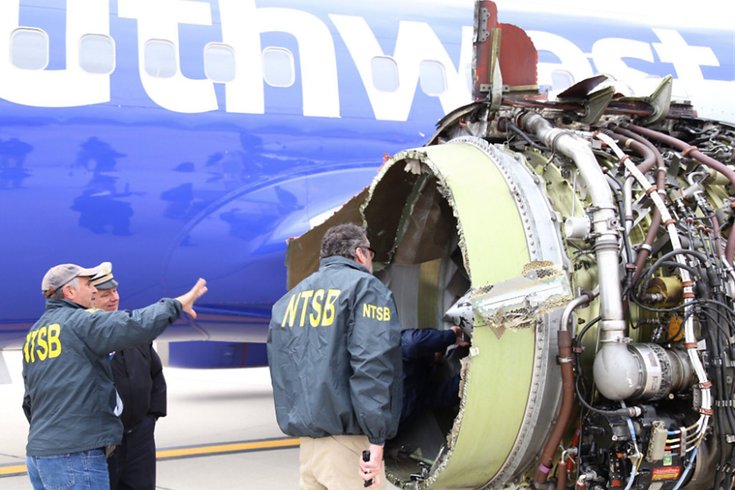
April 19, 2018
 NTSB/via Twitter
NTSB/via Twitter
Investigators with the National Transportation Safety Board examine the damaged engine on the Boeing 737-700 operated by Southwest Airlines that made an emergency landing at Philadelphia International Airport on Tuesday.
A recommendation last year to inspect fan blades on engines like the one that failed Tuesday on Flight 1380 was opposed by Southwest Airlines, according to a report.
According to Reuters, engine-maker CFM International proposed safety checks on its engines last June after a fan blade separated from a Southwest engine in August 2016, citing federal documents. The FAA proposed to make CFM’s recommendation mandatory in August but never issued a directive.
Southwest resisted the recommendation, saying it needed more time to complete the checks, according to the Reuters report:
“SWA does NOT support the CFM comment on reducing compliance time to 12 months,” Southwest Airlines wrote in a comment available on the federal website that allows companies and individuals to comment on proposed new rules. CFM International is a joint venture of General Electric and France’s Safran.
Southwest spokeswoman Brandy King said on Thursday the comments “were to add further clarification on items included in the proposed AD.” She said the company had satisfied the terms of the CFM service bulletin but did not immediately answer questions about how many engines had been inspected and whether the failed engine had been inspected.
The mid-air engine explosion Tuesday morning over northern Berks County in Pennsylvania. A passenger from New Mexico, Jennifer Riordan, was killed. Officials said she died of blunt force trauma. The flight from New York City to Dallas was diverted to Philadelphia International Airport. Seven passengers were injured.
Debris from the engine had torn a 12-inch-long hole above the left wing of the Boeing 737-700 twin-engine aircraft.
On Tuesday night, Robert Sumwalt, NTSB chairman, told reporters that a preliminary inspection of the engine on the ground indicated one of the 24 fan blades on the engine – the No. 13 blade – was broken off at the hub and missing.
It appeared from a visual inspection that metal fatigue was the cause, Sumwalt said. Further testing would be necessary, he added.
Read the full report from Reuters.